Green Cleaning 101: How to Make & Use Natural Cleaning Solutions
We often hear about the concept and importance of eco-friendly cleaning services but how much do we really understand?
Without going too much into detail, what people need to be aware of is the negative impact both small-scale and large-scale cleaning operations (using chemicals) have on the environment and our health.
With that said, it is important for each one of us to reconsider the cleaning products and methods applied in our homes in a bid to do our part in reducing the use of toxic chemicals.
While many homeowners have already switched to organic cleaning solutions, others are skeptical of their effectiveness.
Apart from this, some individuals are unsure of how to make natural cleaners and/or use them correctly. That’s probably what brought you to this article.
Well, it’s a good thing it did because Nordland Cleaning Service is here to tell you all about non-toxic, super-effective natural cleaners for your home!
Read on to learn about what eco-safe ingredients you should stock up on, how to make DIY natural household cleaners, and how to get the best use out of them.
Non-Toxic Ingredients for Green Cleaning Your Home
In order to make the switch to green cleaning, you need to replace those chemical cleaners with eco-friendly alternatives.
This can either mean purchasing green cleaning products or simply buying or stocking up on ingredients to make your own range of DIY natural cleaners.
At Nordland Cleaning Service, we highly recommend the latter as some store-bought ‘green’ cleaners are not 100% eco-friendly. On the other hand, DIY cleaning solutions made with the right natural ingredients are!
Here is a list of non-toxic ingredients you should have in stock at all times:
- Baking soda
- White vinegar
- Lemons or lemon extract
- Hydrogen peroxide
- Isopropyl alcohol
- Castille soap
- Salt
- Essential oils
As far as cleaning tools are concerned, purchase a pack of spray bottles and microfibre cloths (you’ll need at least a couple of each item).
How to Make Natural Household Cleaners
Think about the different cleaning products you have in your home; if these are all chemical-based, they need to be replaced with DIY natural cleaners. This means having an entire range of household cleaners for different areas and surfaces in your home.
Here are the recipes for some tried and tested natural home cleaners. All you need to do is mix them together and store the solution in a bottle of your choosing.
DIY Multi-Purpose Cleaner
- White vinegar – 1 cup
- Hydrogen peroxide – 1 ½ cup
- Water – 4 cups
- Liquid castile soap – 1 tablespoon
- Lavender essential oil – 1-2 tablespoons or as per your preference
DIY Mirror & Glass Cleaner
- Isopropyl alcohol (70%) – 1 cup
- Water – 1 cup
- White vinegar – ¼ cup
DIY Toilet Bowl Cleaner
- Distilled water – 1 cup
- White vinegar – ½ cup
- Hydrogen peroxide – ¼ cup
- Liquid castile soap – ½ cup
- Essential oil – 2-3 tablespoons or as per your preference
DIY Floor Cleaner
- Water – 7 cups
- White vinegar – ½ cup
- Baking soda – ¼ cup
- Liquid castile soap – 2-3 tablespoons
NOTE: This homemade floor cleaner can be used on tile, laminate, and vinyl floors.
How to Use Natural Cleaners to Clean Your Home
Now, for the most important part; learning how to use DIY natural cleaners to clean the different areas and surfaces in your home!
This is where we put the homemade cleaners above to use, as well as various natural ingredients used in combination to clean up household surfaces, bathroom components, kitchen appliances, and more!
So, let’s get started with our guide to using DIY green cleaning solutions at home.
General Surface Cleaning
This is what your DIY all-purpose cleaner was made for!
From cleaning furniture and countertops to cabinet exteriors and bathroom surfaces; this homemade multi-purpose cleaner is perfect for safely removing mild dirt from various types of surfaces.
It works best when paired with a microfibre cloth; simply dampen the cleaning tool with the cleaning solution, or spray the surface directly and wipe.
Mirrors & Glass
Wipe the mirror or glass with a clean dust cloth to remove loose dirt and dust. Clean out corners and edges with a brush, and wipe over the surface again.
Spray on your DIY glass and mirror cleaner and quickly wipe the surface with a microfibre cloth.
An ‘S’ pattern is advised while wiping the surface to avoid streaks.
Bear in mind that even a thorough cleaning of your windows will not yield the best results unless done on a cloudy day or when the sun isn’t hot enough to dry the window panes too quickly.
Tile Grout
The safest, naturalist and most effective way to clean tile grout requires just one ingredient – baking soda!
All you need to do is add a little water to the powder to make a paste; then apply it to the grout lines.
Allow it 10 minutes of sitting time before gently scrubbing the grout with a tile grout brush or soft toothbrush. Finish off by rinsing the grout lines with plain water.
Flooring
After sweeping or vacuuming your floor, you have to mop it in order to remove stains and dirt clinging to the surface.
For this, use the DIY floor cleaning recipe (mentioned earlier) to make a fresh solution in a bucket or basin; warm-up cleaner if you are dealing with stubborn grime as heat helps to loosen hardened stains and dirt.
Dampen your mop in the cleaning solution or sprinkle some of it on the floor and mop.
Microwave
All that grease buildup inside your microwave is not only gross to look at but attracts bacteria as well.
It’s important to keep your microwave interior sanitary and that can very easily be achieved with eco-safe ingredients.
To clean your microwave naturally, measure 1 cup each of white vinegar and water in a microwavable bowl; add 3 tablespoons of lemon extract and mix the ingredients well.
Put the bowl inside the microwave, set the heat to high, and turn it on for 2-3 minutes.
During this time, the interior walls and glass will start to sweat or steam up, thereby loosening the grime buildup inside.
When the surface is cool to touch, put on a pair of rubber gloves, and wipe the interior clean with a non-abrasive scrubber or microfibre cloth.
Toilet Bowl
The ratios provided for Nordland Cleaning Service in Northern Virginia DIY toilet bowl cleaner are intended for general cleaning purposes.
For stubborn stains and discolouration, consider doubling the quantities of each ingredient.
For best results when cleaning your toilet bowl, it is advisable to pour the cleaner around the interior of the bowl and allow it to break down grime overnight or for a couple of hours.
At the end of the standing time, all you have to do is brush away the loosened grime, and flush the toilet to rinse the interior.
Cookware
If you clean your dishes by hand, a paste of baking soda and water is effective in cleaning and removing stains from plastic/melamine; however, steel utensils require some amount of abrasion to get rid of stubborn grease and stuck-on food bits.
To do this naturally, measure 2 tablespoons of sea salt in a bowl and add some lemon juice to it (enough to make a paste-like consistency).
Dip a sponge or scrubber in the paste, and scrub away grime from your steel cookware. Rinse each item thoroughly as the salt tends to get around; wipe dry thereafter.
White Laundry
Not a lot of people are aware of this but white laundry comes out of the washer a lot brighter when you add some baking soda to it.
Of course, you can also use the powder for coloured fabrics, however, the effect is more evident when it comes to your whites.
All you need to do is add 1 cup of baking soda to a full load of laundry, and start the cycle!
Carpet Stains
It’s always worrying when you spill something on your carpet or come home to find a stain you’ve never seen before.
Fortunately, you won’t have to worry about that anymore with this natural approach to removing carpet stains. Start by spraying the carpet stain with isopropyl alcohol (70%), and let it soak for 5 minutes.
Next, take a bar of castile soap and rub it over the stained area.
Do this for about 30 seconds so that enough soap has been absorbed by the carpet.
To help lift the stain, use a clean, white cotton cloth and dab the affected area. If the cloth becomes too damp, replace it with a fresh one, and continue blotting until the stain is no longer being transferred to the cloth.
Allow the carpet to dry completely and repeat the process if needed.
Remember not to be swayed by the misconception that chemical cleaners = better results.
In your journey towards eco-conscious household cleaning, stick to these natural, non-toxic ingredients and recipes that Nordland Cleaning Service in Northern Virginia has shared with you today and enjoy a clean, chemical-free home for the rest of your tomorrows!
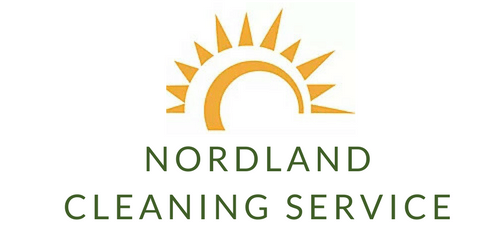
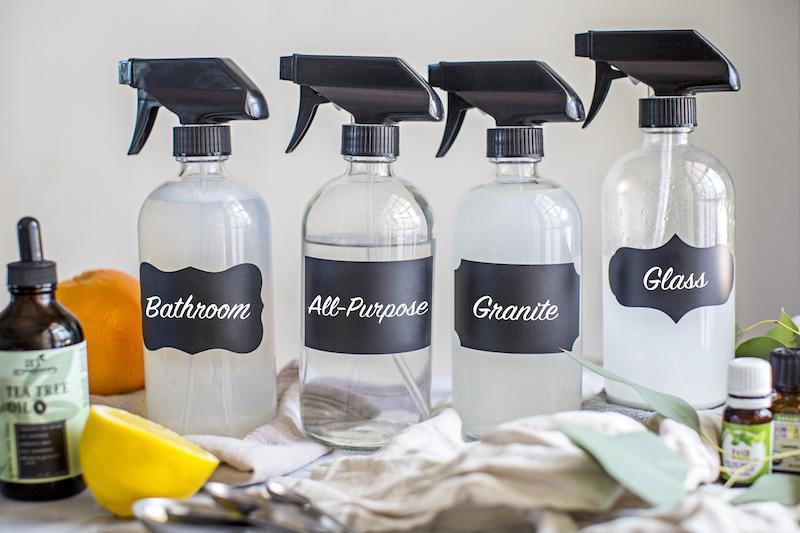
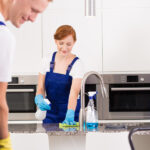
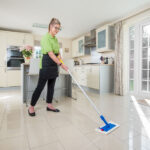




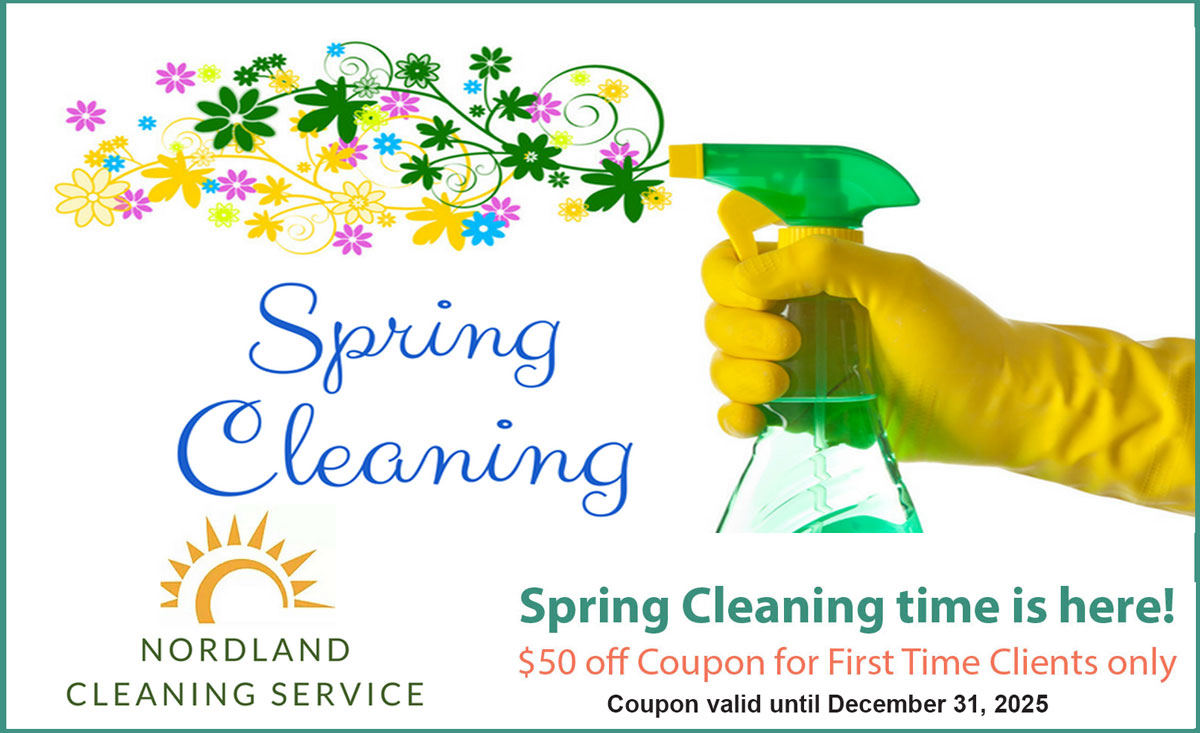
Recent Comments